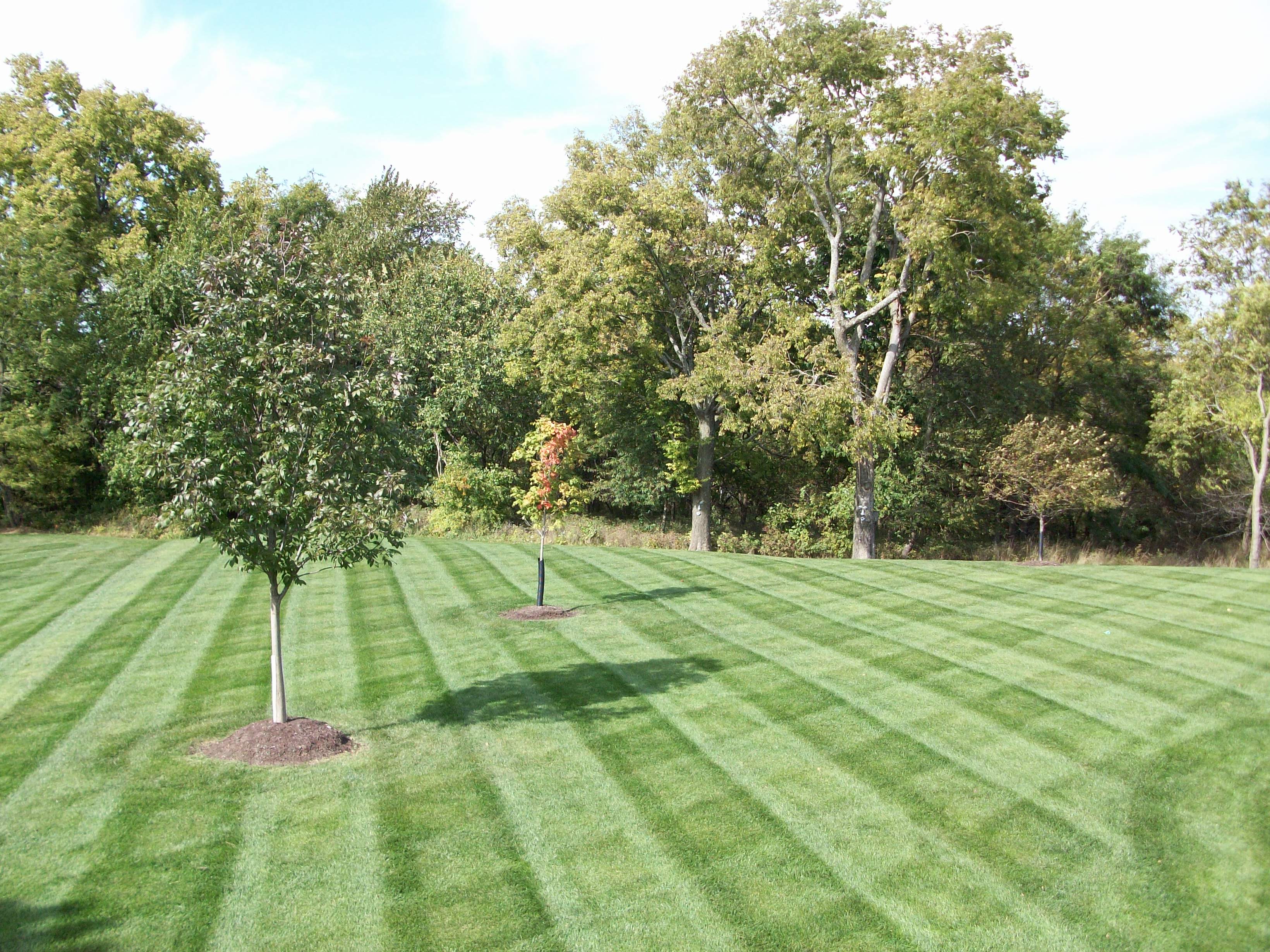PROPER MOWING: Two important aspects of mowing are height and frequency. The preferred mowing height for most lawn species in New Jersey is 2½ to 3½ inches. Mowing less than 2 1/2 inches decreases drought and heat resistance and increases the incidence of insects and disease damage, and weed invasion. Mow the turf often enough so that no more than 1/3 of the grass height is removed in a single mowing. You may need to mow a recently fertilized lawn every 4 to 5 days in the spring but only once every 7 to 14 days when growth is slowed by heat, cold, drought or limited fertilization.
If weather or other factors prevent mowing at the proper time, raise the height of the mower temporarily to avoid cutting too much at one time. Cut the lawn again a few days later at the normal mowing height. The appropriate mowing frequency allows you to let the grass clippings fall back to the lawn without any detriment to the lawn. Grass clippings decompose quickly and provide a source of recycled nutrients and organic matter for the soil. Mulching and side-discharge rotary mowers do this easily if the lawn is mowed at the proper frequency. Grass clippings DO NOT contribute to thatch accumulation.

THATCH: Thatch is a tight, brown, organic layer of both living and dead grass roots and stems that accumulate above the soil surface. Thatch can be a problem on some Kentucky bluegrass, fine fescue, bentgrass, and zoysiagrass lawns. Thatch is generally not a problem on tall fescues and perennial ryegrass lawns. Compacted soil also contributes to thatch buildup. As a thatch layer thickens, it becomes the primary rooting medium of the lawn. This predisposes the turf to drought stress and increases the possibility of damage due to insects and disease. Fertilizers and pesticides applied to thatch filled turf may work less effectively.
A light (shallow) power raking each spring by your landscape company may be beneficial if performed annually. This type of thatching is usually performed during the Spring Cleanup of the property. Core Aeration is more beneficial than power raking. Core aeration every year or two improves the root zone by relieving compaction, improving water infiltration and controlling thatch accumulation. Power raking is best done in the spring, and core aeration and over-seeding in late Summer-early Fall when lawn grasses grow vigorously and can recover from the damage caused by these practices.




